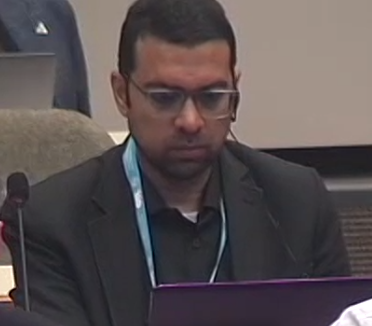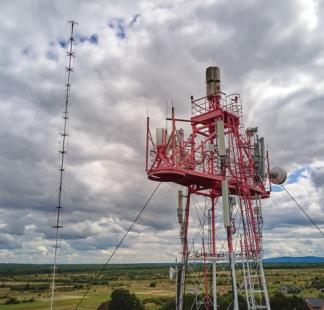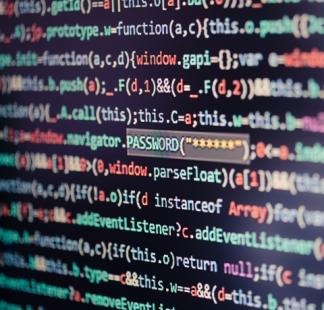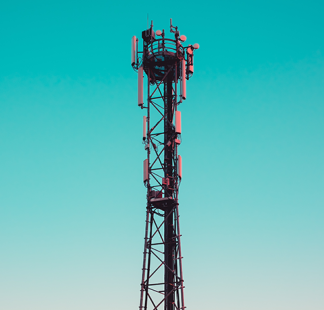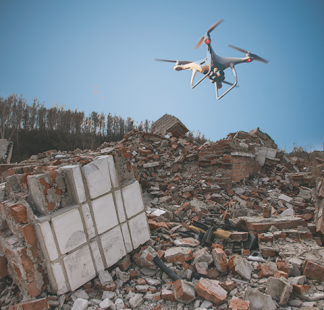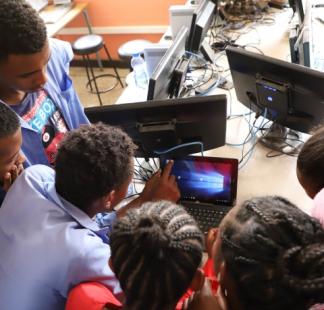- Mona Ismail
- Amany Shehab
- Ahmed Soliman
Intermediate
Description
This training course designed to build both intermediate knowledge and practical skills related to spectrum monitoring, a cornerstone of modern telecommunications. The intermediate level is extending the information to include practical applications of the principles explained in detail in the introductory level. It emphasizes the critical role of spectrum monitoring in ensuring efficient use of radio frequencies, addressing interference issues, and supporting regulatory compliance.
It equips participants with industry-relevant expertise in conducting spectrum measurements and results analysis, operating advanced spectrum monitoring and direction-finding equipment. It also provides learners with the necessary skills to identify, analyze, and resolve interference problems in various scenarios. through a blend of theoretical knowledge, real-world applications, and hands-on exercises.
This program is designed for Intermediate expert engineers in telecommunications, spectrum management authorities, regulatory bodies, and technical engineers seeking to enhance their expertise in spectrum monitoring and interference resolution.
With a balance of theoretical knowledge and online practical experience, this program prepares participants to excel in managing radio frequency resources effectively.
Qualifications or experience needed to participate in this training course:
- Professional Experience: Minimum of 2 year and up to 5 years of hands-on experience in telecommunications or spectrum management.
- Technical Knowledge:
- General understanding of wireless communication principles and radio frequency concepts.
- Basic familiarity with technical devices such as spectrum analyzers or monitoring equipment.
- Awareness of radio interference concepts and common challenges.
- Analytical Skills: Proven ability to interpret and analyze basic measurement reports effectively.
- Problem-Solving Ability: Demonstrated skills in troubleshooting and resolving issues in telecommunications environments.
- Desirable Qualifications:
- A degree in telecommunications, electrical engineering, or a related field is preferred.
- Advanced knowledge or specialized training in spectrum management tools and techniques is a plus.
Selection criteria:
- Demonstrated ability to troubleshoot spectrum interference issues.
- Proven track record of analyzing spectrum measurement reports.
- Advanced knowledge of wireless communication systems.
Number of available places for the cohort: Max 40
Summarize Core Concepts:
- Revise the fundamentals of spectrum monitoring and its importance in managing radio frequencies effectively.
- Recognize the relationship between spectrum monitoring and spectrum management.
Apply International Standards:
- Recognize and apply international guidelines, including ITU recommendations, to spectrum monitoring tasks.
Examine Equipment Usage:
- Analyze advanced monitoring tools such as spectrum analyzers, direction-finding systems, and other related equipment.
Perform Monitoring Tasks:
- Conduct various spectrum monitoring activities, including measurements, spectrum scanning, and EMF assessments.
Manage Interference:
- Identify, analyze, and resolve radio interference issues using practical techniques and case studies.
Utilize Spectrum Monitoring Stations:
- Recognize the roles of different types of monitoring stations (fixed, mobile, portable, automated) and their configurations.
Implement Direction Finding Techniques:
- Apply direction-finding methods to locate transmitters and address unauthorized spectrum use.
Analyze Measurement Data:
- Interpret measurement results and spectrum scanner outputs to ensure efficient frequency use.
Enhance Regulatory Compliance:
- Support regulatory objectives through effective monitoring practices aligned with ITU recommendations and reports.
Develop Practical Problem-Solving Skills:
- Tackle real-world spectrum challenges using learned techniques and tools.
A clear methodology is employed to ensure the training objectives are effectively achieved:
- Theoretical Training:
- Explaining Fundamental Concepts: Begin with clear and comprehensive definitions of key concepts such as spectrum monitoring, direction finding, and radio interference.
- Utilizing Reference Materials: Rely on ITU-R recommendations, the Spectrum Monitoring Handbook issued by the ITU, and technical reports as scientific references to enhance the content.
- Interactive Lectures: Encourage open discussions with trainees to explain concepts and link them to practical applications.
- Interactive Learning:
- Case Studies: Present real-life examples of spectrum monitoring and interference issues, along with their resolutions.
- Groupwork: Conduct group activities to analyze recommendations, prepare reports, and design spectrum measurement plans.
- Assessment and Feedback:
- Performance Evaluation: Measure trainees’ progress through theoretical and practical tests to ensure objectives are being met.
- Immediate Feedback: Provide constructive comments during the training to improve performance.
- Use of Advanced Educational Tools:
- Presentations: Deliver interactive presentations supported by graphs and multimedia to clarify concepts.
- Equipment and Tools: Provide access to spectrum analyzers, direction-finding devices, and fixed and mobile monitoring stations for online real operation experience.
- Enhancing Practical Application in the Workplace:
- Link training to real-world situations that trainees encounter in their professional roles.
To ensure participants meet the learning objectives effectively, the following methods and weight distribution will be used to measure and assess their performance:
Assessment Methods:
- Knowledge Assessments/Quizzes:
- Periodic quizzes to evaluate understanding of theoretical concepts.
- Questions related to spectrum monitoring fundamentals, international standards, and interference management.
- Final Exam:
- A comprehensive written or practical test assessing the participant's ability to integrate theoretical knowledge with practical applications.
This structure ensures a balanced evaluation of theoretical knowledge and practical skills, equipping participants with the necessary expertise in spectrum monitoring.
Activity and weighting (%)
- Group Activity: 30
- Assessments/Quizzes: 30
- Final Exam: 40
A total score of 80% or higher is required to obtain the ITU certificate
Day 1: Spectrum Monitoring and Spectrum Scanning
- Learning Outcomes:
- Spectrum Monitoring Overview
- Frequency Band Occupancy
- Frequency Channel Occupancy
- Advanced Scanner Features and Configurations
- Signal fingerprinting for advanced classification
- Detection of Interference and Cross-Border Issues
- Data Analysis and Visualization
- Case Studies and Practices
- Activities:
- Interactive lecture
- Presentations
Day 2: Monitoring Stations
- Learning Outcomes:
- Fixed Monitoring Stations
- Mobile Monitoring Stations
- Portable Monitoring Stations
- Remote Control and Automation
- New Monitoring Station Network
- Activities:
- Presentations
- Online demonstration for all station types
Day 3: Spectrum Analyzer and EMF Measurement
- Learning Outcomes:
- Spectrum Analyzer Measurements
- Spectrum Analyzer Parameters
- Receivers vs. Spectrum Analyzers
- Advanced EMF Measurement Concepts
- Integration of EMF Measurement in Spectrum Monitoring Systems
- Complex Measurement Scenarios
- Advanced Measurement Tools and Techniques
- EMF Mapping and Visualization
- Activities:
- Quiz
- Presentations
- Online demonstration for Spectrum Analyzer
- Online demonstration for EMF
Day 4: Direction Finding and Spectrum Monitoring in ITU
- Learning Outcomes:
- Classic DF Methods
- Locating the Transmitter Source
- Single Site Location
- Direction Finding Measurement
- Location via TDOA
- ITU-R SG1 WP1C
- Monitoring and the Radio Regulations
- ITU-R Reports and Recommendations
- Activities:
- Quiz
- Presentations
Day 5: Interference
- Learning Outcomes:
- Impact of Radio Interference
- Source of Radio Interference
- Solving Interference Problems
- Equipment Parameters
- Interference Analysis
- Interference Removal Procedure
- Interference in Cellular Networks
- Interference Examples
- Activities:
- Quiz
- Presentations
- Case study for interference
- Final Exam
Tutors
